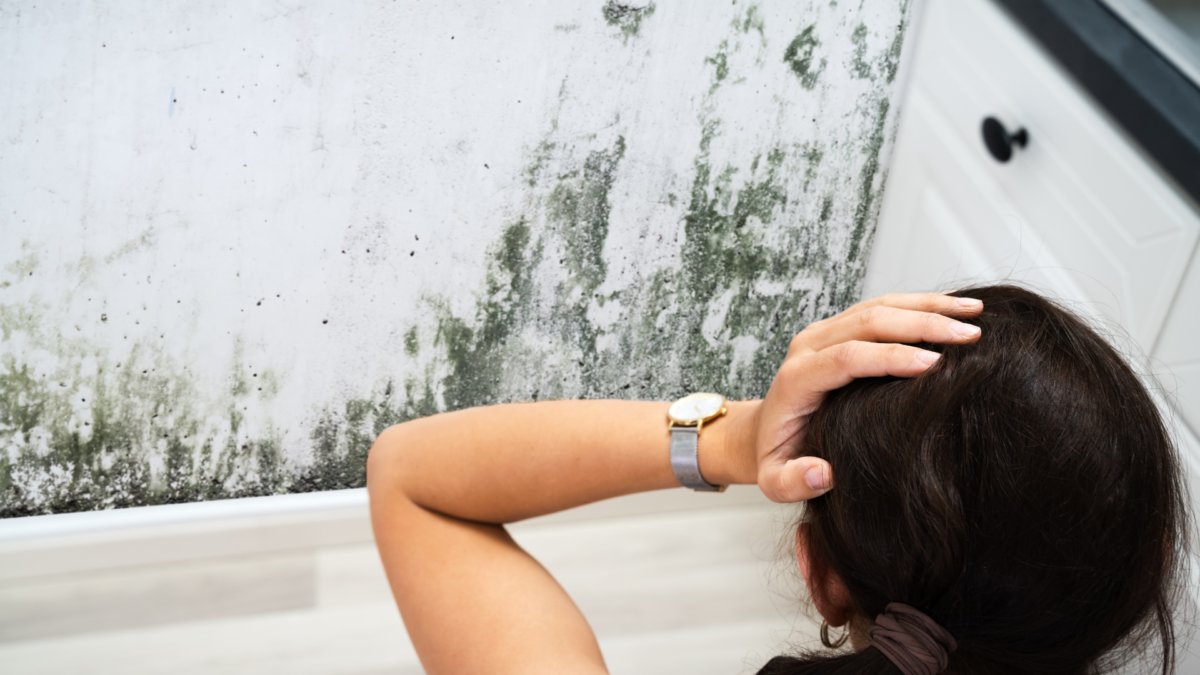Ah, the comforts of home – a place of warmth, safety, and coziness. But amidst all the joy, there can be some uninvited guests lurking in the shadows. Mold, the not-so-pleasant visitor, has a tendency to sneak into our living spaces, causing discomfort and health issues. The culprit? Often, our own unwitting actions. In this blog post, we’ll delve into the curious world of mold and shed light on the common household practices that unwittingly contribute to its growth. So, let’s roll up our sleeves and learn how to keep mold at bay while maintaining a comfortable home environment.
The Mold Mystery Unveiled
Mold isn’t just an eyesore; it’s a living organism that thrives in moist and humid environments. Those fuzzy patches on your walls are made up of microscopic spores that can cause a range of health problems, from allergies to respiratory issues. The key to controlling mold is understanding the factors that foster its growth. Of course, if you do notice any signs of mold, professional mold removal is a must.
What Causes Mold?
1. Inadequate Ventilation: Stagnant Air, Mold’s Best Friend
Imagine a room where the air hangs heavy, untouched by fresh breezes. This is the ideal breeding ground for mold. Poor ventilation traps moisture, encouraging mold to take root on walls, ceilings, and even furniture. To tackle this, make it a habit to open windows daily, allowing cross-ventilation to whisk away damp air. Additionally, consider using exhaust fans in kitchens and bathrooms, where moisture tends to accumulate.
2. Neglecting the Basics of Humidity Control
Humidity levels play a pivotal role in mold growth. A humid environment feels like a tropical vacation for mold spores, allowing them to reproduce rapidly. Invest in a hygrometer to monitor humidity levels – ideally, they should stay below 50%. If things get too damp, consider using a dehumidifier to suck out excess moisture from the air.
3. Damp Fabrics: A Playground for Mold
Did you know that that pile of damp clothes you left in the laundry basket could become mold’s playground? Wet fabrics are a favorite breeding spot for mold spores. Avoid leaving damp clothes lying around; instead, dry them promptly. The same goes for bathroom towels – hang them up after use to prevent moisture buildup.
4. Overwatering Indoor Plants: Greenery and Mold Can Coexist
Indoor plants lend a touch of nature to our living spaces, but their pots can inadvertently become mold incubators. Overwatering plants causes excess moisture to accumulate in the soil, providing an excellent breeding ground for mold. Be mindful of your plants’ water needs and ensure proper drainage to prevent standing water.
5. DIY Repairs Gone Awry: When Mold Finds Shelter
We all enjoy a good DIY project, but sometimes, our efforts can lead to mold problems. Poorly sealed windows, leaking pipes, and improperly fixed roof leaks can create hidden areas of moisture that mold thrives in. For example, if you try to fix a leaky pipe under your kitchen sink without sealing the connections properly, moisture can seep into the surrounding cabinetry, providing an ideal environment for mold to grow. When dealing with such issues, it’s often wise to enlist the help of a licensed plumber, whether for routine repairs or in an emergency. This ensures that the job is done correctly and minimizes the risk of future water damage and mold growth. To sum it up, you may need to make sure that any DIY repairs should be conducted thoroughly and professionally to prevent moisture from seeping in.
6. Clutter Conundrum: The More, the Moldier
Clutter isn’t just an aesthetic issue – it can contribute to mold growth too. Piles of clutter restrict air circulation and create pockets of humidity that mold thrives in. Take some time to declutter your living spaces regularly, allowing air to flow freely and reducing the chances of mold finding a cozy nook to settle in.
When clearing out unnecessary items from your home, start by getting rid of things that you no longer use. This might include broken furniture, old shoes, unwanted gifts or toys. You can consider donating usable items to local charities or thrift stores. Also, you can sell those items through online platforms. Nevertheless, if you do not have the time or prefer to dispose them, you can rent a dumpster from companies like Waste Removal USA (www.wasteremovalusa.com) for effective disposal.
7. The Bathroom Blues: Moisture Mismanagement
Bathrooms, with their constant exposure to water and steam, are prime mold breeding grounds. Make it a habit to wipe down surfaces after each use to prevent moisture buildup. Installing a bathroom fan can also help whisk away excess humidity, leaving no room for mold to flourish.
A Splash of Color: Paint and Mold Prevention
Painting your walls can breathe new life into your living space, but did you know it can also play a role in mold prevention? Using mold-resistant paint can act as an additional barrier against mold growth. These paints contain antimicrobial agents that inhibit mold’s ability to take hold and spread. When choosing paint for damp-prone areas like bathrooms or kitchens, opt for these mold-resistant options to give mold one less foothold to cling to.
Conclusion: A Mold-Free Haven
In the realm of homeownership, addressing mold growth and Mold Damage may initially appear as a minor task, yet its implications on health and overall well-being are far-reaching. Mold, a type of fungus that thrives in damp and poorly ventilated environments, poses significant health risks and can exacerbate respiratory issues, allergies, and other health concerns. Therefore, it’s imperative to adopt proactive measures to combat mold growth and create a healthier living environment for oneself and loved ones.
One of the most effective strategies in preventing mold growth is to cultivate habits that promote proper ventilation and humidity control within the home. Ensuring adequate airflow through open windows, utilizing exhaust fans in high-moisture areas such as bathrooms and kitchens, and investing in dehumidifiers are all effective methods to reduce moisture levels and discourage mold proliferation. By maintaining optimal indoor humidity levels (ideally between 30% – 50%), homeowners can significantly inhibit mold growth and create an inhospitable environment for spores to thrive.
Moreover, addressing and repairing sources of moisture intrusion, such as leaky pipes, roof leaks, or foundation cracks, is paramount in preventing mold growth. Even minor water leaks can lead to significant moisture accumulation over time, creating conducive conditions for mold colonization.
Furthermore, maintaining cleanliness and practicing good housekeeping habits are integral components of mold prevention. Regularly cleaning and disinfecting high-moisture areas, such as bathrooms and basements, helps eliminate mold spores and inhibit their growth.
By adopting mindful daily habits and making small adjustments to promote ventilation, humidity control, and moisture prevention, homeowners can create an environment that is less conducive to mold growth. After all, a home should be a sanctuary, not a breeding ground for mold, and the power to create a healthy living environment lies within our hands.

